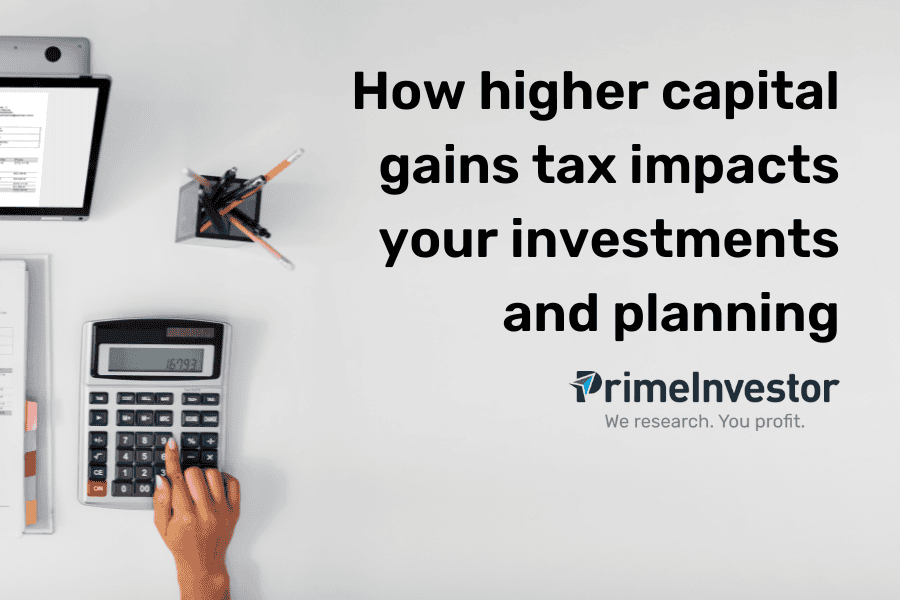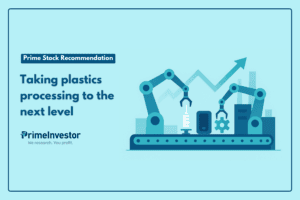The recent changes to capital gains tax may seem simpler on the surface, but their impact on your investment goals can be far-reaching. When tax rates rise for existing investments, you’re faced with three potential outcomes:
- increased tax outflows
- a smaller final corpus
- or a delayed achievement of your financial goals

While reaching your goal was never guaranteed due to market fluctuations, higher taxes introduce an additional layer of uncertainty. It’s essential to reassess your investment strategy in light of these changes to stay on track. Let us try to build a few scenarios to see if your investments will be impacted due to the recent long-term capital gains (LTCG) tax rate hike.
How higher capital gains tax impacts your post-tax return
Let us use Excel (please download the link below) to see the impact of the higher capital gains tax on your post-tax returns and corpus in a simple scenario of a fixed lump sum investment made. In the excel sheet, you will find the inputs in the sheet called ‘interface’. You can decide in how many years you will sell and pay the capital gain.

In the sheet, you will see the default amounts we have entered – Rs 10 lakh of investment, 12% expected CAGR and investment duration of 25 years. So, what is the impact on this investment due to the higher capital gains tax?
With long term capital gains tax changing from 10% to 12.5% – the net difference in return (CAGR) is 0.12% (11.56% vs 11.44%). The earlier you sell, the lower you will earn under the new capital gains tax rate. For example, your returns will be lower by 0.3% at the end of one year. But as you can see from the sheet called ‘table’ the return difference diminishes with time (0.12% at the end of 25 years in the illustration), thanks to the impact of compounding.
Still, there will be a difference in your actual corpus (new vs old tax rate) and this naturally increases with time. For example, at the end of 25 years, you can see in the sheet called table (for the above example) the 12.5% tax will make you poorer by Rs 4 lakh, for an initial investment of Rs 10 lakh.
This difference was just Rs 2.16 lakh at the end of the 20th year and jumps to Rs 4 lakh by the 25th year. Here again it is the same power of compounding causing the difference in value to jump. Besides, your tax outgo is actually 25% higher whenever you decide to sell. That is simply the difference between 12.5% and 10%.
Takeaway: Overall, one can say that your returns as such do not really take a hit with the current hike in capital gains tax. Nevertheless, there is no denying that it will leave you with a lower corpus, forcing you to postpone your goal further or save more in-between. Let us look at this case of how your goal gets impacted due to the tax impact with a monthly saving plan.
How higher capital gains tax impacts your financial goals
From the last section, you’ve seen that when you are planning for your goals over a long period, you need not make a big adjustment to your return expectations to account for capital gains tax. However, does that mean taxes don’t matter at all when planning investments? Not really.
In fact, changes such as the increase in capital gains tax we’ve seen in the recent budget make a meaningful difference on ongoing investments. And like we mentioned earlier, this uncertainty is compounded by the actual return in your investment turning out to be lower than the expected return.
Let’s see an example:
- You’re planning to invest Rs. 10,000 per month for 15 years.
- You estimate that investment returns will be around 13%.
- The estimated post-tax value of your investments at the end of 15 years is around Rs. 50 lakh
Let us look at them under two scenarios: one the 10% LTCG and 15% STCG. And then the new 12.5% LTCG and and 20% STCG tax rates.
Scenario 1: Old capital gains tax rates
You continue with your investments and periodically monitor them to see whether the progression is as intended. During the 10th-year review, you notice that the portfolio has generated 12% returns and the accumulated corpus is Rs. 22.4 lakh.
If the portfolio continues to generate 12% returns, with 5 more years of investments, the final value will be Rs. 47.59 lakh. Rs. 2.86 lakh will have to be paid as capital gains tax (Long term: at 10% above Rs. 1 lakh, short term: 15%) resulting in a post-tax value of Rs. 44.73 lakh, which is Rs. 5.27 lakh below target.
At the same returns and same monthly investments, the goal will have be postponed to 10 more months to reach a post tax corpus of Rs. 50 lakh (In 15 years and 10 months, accumulated pre tax corpus will be Rs. 53.36 lakh, Rs. 3.34 lakhs will have to be paid as tax at a long term rate of 10% above Rs. 1 lakh of gains and a short term rate of 15%)
If the goal cannot be postponed, you’ll have to increase the monthly investments to Rs. 16,675. This will generate an additional corpus of Rs. 5.41 lakh which will be a post-tax value of Rs. 5.27 lakh(Long term: at 10% above Rs. 1 lakh, short term: 15%), making the final post-tax corpus Rs. 50 lakh.
Scenario 2: New capital gains tax rates
Now let us see how this calculation will change if the capital gains tax is changed to 12.5% and the exemption is increased to Rs. 1.25 lakh.
At year 10, the accumulated corpus is Rs. 22.4 lakh at 12% returns. The pre-tax corpus at the same returns will be Rs. 47.59 lakh in 15 years. Rs. 3.55 lakh will have to be paid as capital gains tax (Long term: at 12.5% above Rs. 1.25 lakh, short term: 20%), resulting in a post-tax value of Rs. 44.04 lakh, which is Rs. 5.96 lakh below target.
At the same returns and same monthly investments, the goal will have be postponed 1 more year to reach a post tax corpus of Rs. 50 lakh (In 16 years, accumulated pre tax corpus will be Rs. 54.58 lakh, Rs. 4.27 lakhs will have to be paid as tax at a long term rate of 12.5% above Rs. 1.25 lakh and a short term rate of 20%)
Again, to reach the intended post tax corpus in 15 years itself, you will have to increase the monthly investments to Rs. 17,600 (from Rs 10,000). This will generate an additional corpus of Rs. 6.16 lakh, post-tax Rs. 5.96 lakh(Long term: at 12.5% above Rs. 1.25 lakh, short term: 20%), making the final post-tax corpus Rs. 50 lakh.
Now, in both these scenarios, we have not considered the impact of inflation as the goal gets extended. That will further have a diluting effect on the corpus value.
Takeaway: When there is a change in capital gains tax announced without grandfathering, the realisable value of your corpus changes. For the present rate of change, the difference is not stark, if you manage to increase your savings or are willing to postpone your goal a wee bit. But this may change significantly when capital gains tax rates go up in future. Your initial planning with a 10% tax would need to be revisited when rates keep moving up.
Essentially, in long-term goals - especially non-negotiable ones like children’s education, do not set up SIPs and forget about them; periodically monitor your investments for factors such as: investment performance, instrument performance, market returns and changes in taxation.
How to plan for your future and ensure you reach your goals
Typical financial planning exercises, especially for goal-based planning, involve three variables -
- Assumptions about returns - different for equity and debt asset classes
- Assumption about long-term inflation
- Investment time horizon
With long-term tax rates creeping up, it becomes essential now to add taxation as a variable as well, especially when an investor is trying to reach a fixed financial target. So, what should the assumptions be for someone who is doing a long-term (upwards of 10 years) goal-planning? Here is what we think:
- LTCG on equity asset class - If your time horizon is more than 5 years, you can definitely assume that the LTCG rate will be higher than 12.5%. The government has indicated that the rate is likely to be half of the highest tax slab for income - and that gets us to 15%. So, a minimum of 15% tax rate should be factored into your calculations when you have a fixed financial target.
- LTCG on debt asset class - Typical debt investments of a retail investor are made in debt funds and fixed deposits. Withdrawals from these instruments are treated as income and taxed at slab levels. We do not expect a relaxation (or increase) to this level of taxation, and as such slab-level taxation should be assumed in this case.
One thing we can be fairly certain about is that taxation of equity will remain advantageous compared to debt. And that would continue to keep equity the preferred asset class from both pre-tax as well as post-tax returns perspective.
So how should you manage your existing investment plan? The solutions to bridge the gap between your current position and desired outcome, requires either adjusting your return expectations, increasing savings, or extending your investment horizon.
However, today's volatile market returns and changing tax laws demand active investment strategies. While active mutual funds may be a default option, consistently identifying and holding top-performing funds is increasingly becoming challenging. To enhance your portfolio's resilience and potential returns, consider a diversified strategy that combines index funds, active funds, and carefully selected individual stocks.
By strategically allocating your investments across these asset classes, you can better navigate market uncertainties, mitigate risks, and increase your chances of long-term success.
Check PrimeInvestor’s range of products on this front:




2 thoughts on “How higher capital gains tax impacts your investments and planning”
Hi.
Thanks for the detailed article on capital gain taxation.
If one has accumulated or to invest the handsum corpus and plans to withdraw the regular income from the same using SWP strategy then what will be the better option?
Debt (Liquid, USD etc) or Hybrid (Arbitrage, Equity Savings etc).
Regards,
Atul.
Tax-wise for holdings over one year arbitrage and equity savings will work better. But they are not the same as debt in risk profile.
Comments are closed.